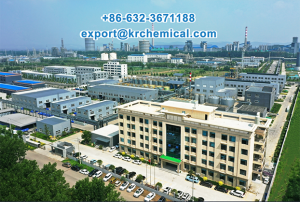Distinguishing the quality of Hydroxyethylidene Diphosphonic Acid (HEDP) requires evaluating its chemical purity, physical properties, performance efficiency, and stability. Below are key methods and criteria to assess HEDP quality:
1. Key Quality Indicators
(1) Active Content (Purity)
-
High-Quality HEDP:
-
Liquid form (50–60% concentration): Active content ≥50%.
-
Solid form (crystalline powder): Purity ≥95%.
-
-
Test Methods:
-
Potentiometric Titration: Measures phosphonic acid groups (using NaOH/HCl).
-
HPLC (High-Performance Liquid Chromatography): Quantifies HEDP and detects impurities.
-
(2) Phosphorus (P) Content
-
Theoretical P in Pure HEDP: ~23.5%.
-
Lower P Content suggests dilution or impurities.
(3) pH Value
-
Liquid HEDP (50%): pH ~2.0–3.0 (high acidity ensures stability).
-
Deviation may indicate contamination or degradation.
(4) Appearance & Color
-
High Quality: Colorless or pale yellow (liquid) / white powder (solid).
-
Poor Quality: Dark yellow/brown (signals oxidation or impurities).
(5) Density (Liquid it)
-
50% HEDP Solution: ~1.4–1.5 g/cm³ at 20°C.
-
Lower density implies dilution.
(6) Impurities
-
Chloride (Cl⁻): ≤100 ppm (high Cl⁻ corrodes metals).
-
Iron (Fe³⁺): ≤30 ppm (excess Fe reduces efficiency).
2. Performance Tests
(1) Scale Inhibition Efficiency
-
Calcium Carbonate Inhibition Test:
-
Mix HEDP with hard water (Ca²⁺/HCO₃⁻) under controlled conditions.
-
Measure residual Ca²⁺ (e.g., EDTA titration) or observe scaling.
-
Good HEDP: >90% inhibition at 5–10 ppm dosage.
-
(2) Thermal Stability
-
Heat HEDP solution to 80–100°C for 24–48 hours.
-
Re-test active content; <5% degradation indicates stability.
(3) Corrosion Inhibition
-
Use carbon steel/copper coupons in HEDP-treated water (per ASTM D1384).
-
Measure weight loss after 72 hours; effective HEDP reduces corrosion rates significantly.
3. Certifications & Documentation
-
ISO 9001/14001: Ensures consistent production standards.
-
MSDS (SDS): Verify composition, safety, and handling instructions.
-
Third-Party Lab Reports: Independent validation of purity and performance.
4. Supplier Evaluation
-
Reputation: Choose suppliers with proven industry experience.
-
Batch Consistency: Request Certificates of Analysis (COA) for multiple batches.
-
Custom Solutions: Reliable suppliers offer low-chloride or high-purity variants for specific needs.
5. Simple Field Checks
-
Dilution Test: Mix HEDP with water (1:10). High-quality HEDP remains clear without sedimentation.
-
Odor: Should be faintly acidic; strong chemical odors suggest impurities.
High-quality HEDP meets strict purity, performance, and stability benchmarks. Prioritize suppliers who provide transparent data and comply with international standards. For critical applications (e.g., cooling towers, oilfields), conduct pilot tests before full-scale use.
Tip: Compare samples from multiple suppliers using the above methods to ensure cost-effectiveness without compromising quality.

